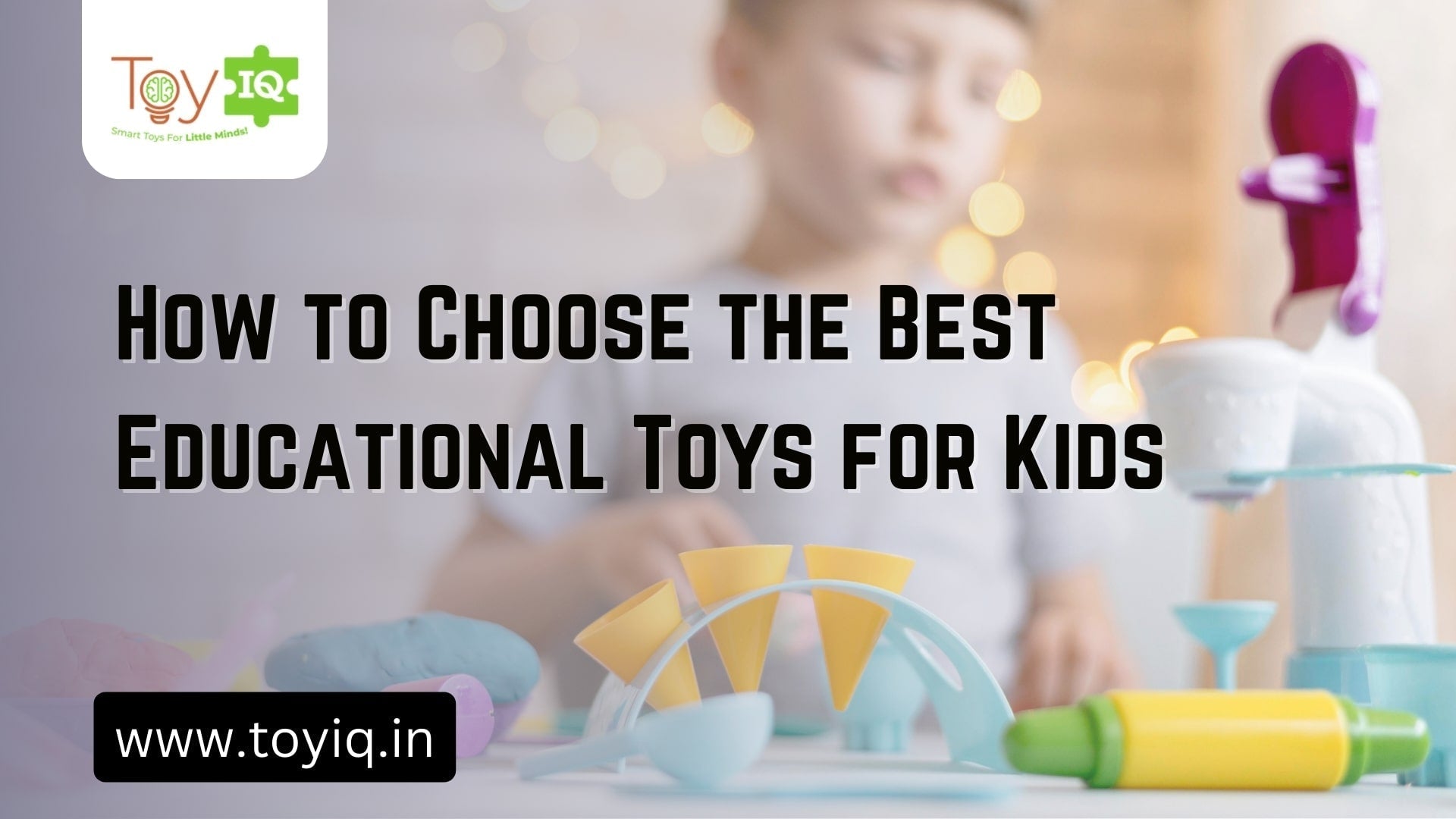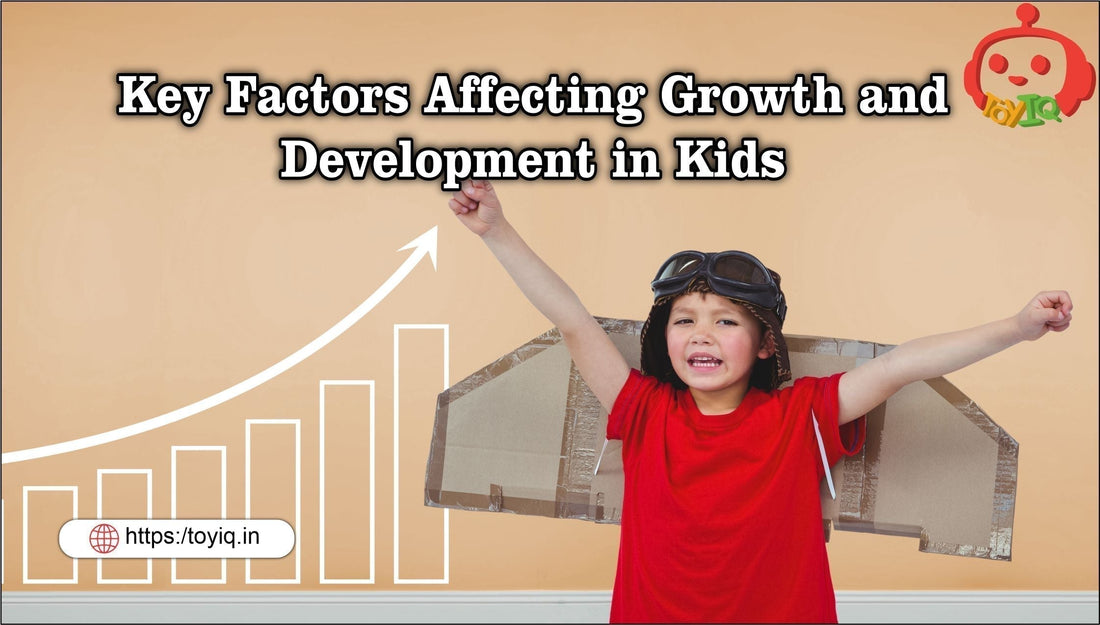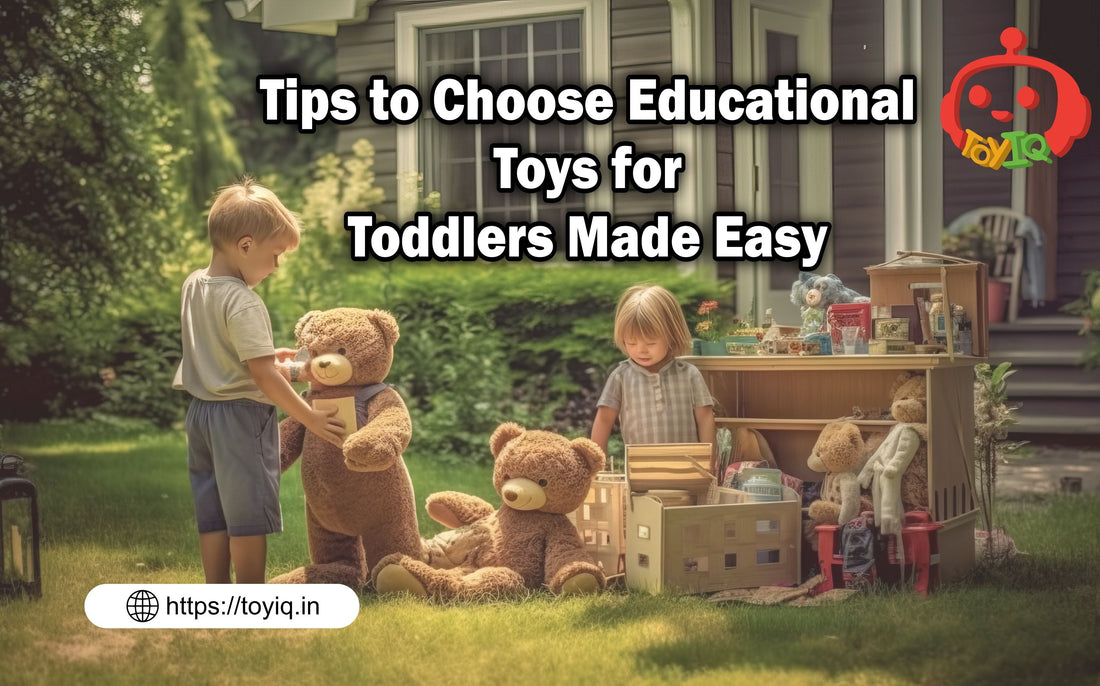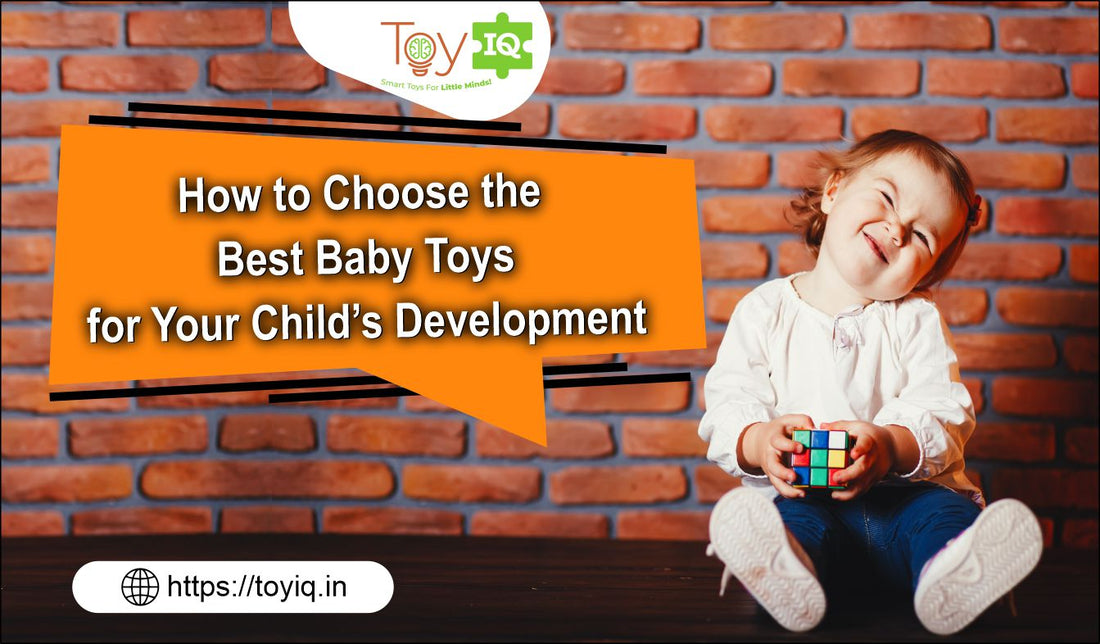Educational toys are not only enjoyable—they play a crucial part in developing a child's Intellectual, social, and machine abilities. Proper toys can develop problem-solving skills, stimulate creativity, and encourage hands-on learning.
However, with so many online choices, finding the most suitable learning toys for kids can seem enormous. Each age group has its own list of requirements for development, and hence it is crucial to choose the appropriate toys according to a child's level of learning.
Let's see how to select the most suitable educational toys for kids, which are interesting and useful for their development level.
Why Educational Toys Matter
Educational toys are designed to encourage learning through play for kids. They enable children to gain important skills development like:
- Cognitive Development – Improving memory power, logic skills, and problem-solving skills.
- Motor Skills – Enhancing hand-eye coordination and fine motor skills.
- Creativity and Imagination – Encouraging storytelling, role-playing, and innovative thinking.
-
Social and Emotional Growth – Develop teaching patience, cooperation, and emotional expression.
Key Factors to Consider When Choosing Educational Toys
-
Age-Appropriate Toys
Choosing toys of an appropriate age guarantees safety and optimal learning gain.
-
- 0-2 years – Soft sensory toys, stacking rings, and musical toys.
- 3-4 years – Alphabet blocks, puzzles, and interactive books.
- 5-8 years – Board games, science experiments, and STEM kits.
- 9+ years – Robots kits, programming toys, and sophisticated building sets.
-
Align Toys with Learning Goals
Think about the development skills you desire your child to acquire:
-
- Language Development: Flashcards, storytelling books, and phonics games.
- Math Skills: Counting toys, number puzzles, and abacus.
- STEM Education: Science sets, coding sets, and building kits.
-
Creativity Boosters: Art kits, music instruments, and make-believe play sets.
-
Safe and Durable Materials
Always check for non-toxic, BPA-free, and long-lasting materials to ensure the safety of your child. Always verify certifications such as ASTM or EN71.
-
Interactive and Engaging Features
Select toys that occupy children for many hours. Learning toys with lights, sounds, and interactive elements can be enjoyable to learn from.
-
Multi-Use and Longevity
Select toys that will extend with your child, having various forms of playing and learning. For instance, magnetic building blocks can be used for basic structures as well as intricate structures as the child develops.
Best Educational Toys for Kids (Top Picks Toys)
Here are some of the best educational toys you can explore:
- Crossword Board Game

Crossword board games are fun and interactive ways to improve a child's vocabulary, spelling, and analytical thinking. It enables word construction, enhances semantic development, and enhances problem-solving ability. It’s ideal toys for children who enjoy word games and puzzles, it also helps in the development of social skills while playing with friends and family.
- Mechanix Battle Station - 2 (Multicolor)

The mechanix battle station - 2 is a great STEM toy that assists in the establishment of problem-solving and engineering skills. With various parts and tools, kids can build their own battle stations, which promotes kid's imagination, and reasoning. Hands-on learning makes it fun to learn.
-
Master Chess

Master chess is a classic strategy board game that teaches children critical thinking, patience, concentration, and decision-making skills. Playing chess enhances memory power, concentration, and logical thinking, making it an excellent brain-stimulating activity for children of any age group. It's a great way to develop logical thinking power with fun games.
- Mechanix - Vintage Car

Mechanik vintage car is a do-it-yourself model in which children build a small model of an old car from plastic and metal components. The toy improves the mechanical and engineering skills, and creativity skills of children in following building and instructions to assemble the vehicle. It's the perfect option for kids who love cars and buildings.
- Blix – DIY RC Explorers

The Blix DIY RC Explorers is an exciting remote-controlled building set that educates kids in the field of robotics and automation. It develops spatial thinking and insight into elementary engineering principles. The kit allows kids to build and play with their own RC car, making learning exciting and engaging.
Conclusion
Choosing the perfect educational toy for your child requires careful consideration of their age, interests, and developmental needs. By selecting toys that promote learning, creativity, and engagement, you can ensure that playtime is both fun and beneficial.
At ToyIQ, we are dedicated to designing STEAM-based educational toys that enhance learning through play.
FAQ
How often should I update my child's educational toys?
Kids outgrow toys as they master new abilities. It's best to change learning toys every 6-12 months according to their age, interests, and learning growth. Select toys that expand along with your child, like STEM sets, construction blocks, and educational learning games.
Can educational toys improve my child's academic performance?
Yes! Educational toys help reinforce ideas such as math, language, and problem-solving through fun. Flashcards, logic-based games, and STEM toys can make studying enjoyable and enhance a child's understanding of subjects.
How can I make learning through toys more effective?
To maximize learning, parents should:
- Play with their child to guide them.
- Choose toys that match their interests.
- Set up a dedicated play-learning space.
- Encourage problem-solving and exploration rather than giving instant solutions.





